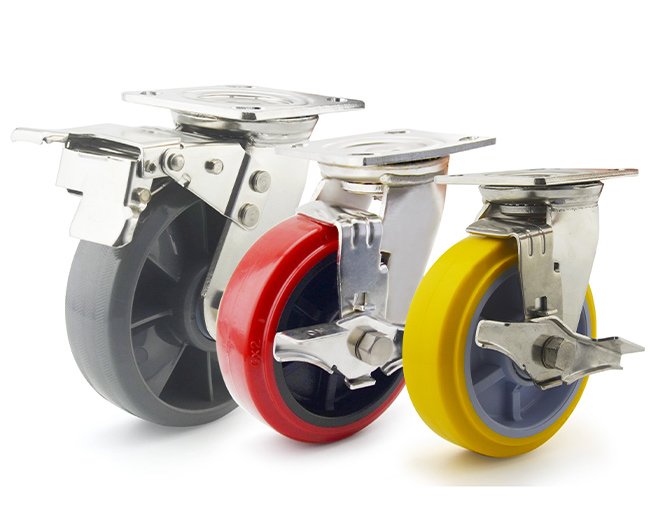Castors were industrialized from the late 19th century in the West, so casters are generally expressed in inches. A typical handcart uses 5-inch or 4-inch casters. The difference between stainless steel casters and ordinary industrial casters is that the brackets and standard parts are made of stainless steel, which has strong corrosion resistance.

When choosing stainless steel casters, there are several points to pay attention to.
1. Dimensions
Generally speaking, the larger the diameter of the casters, the less force is used to push them, and the stronger the ability to overcome obstacles. The casters we often use include 2 inches, 2.5 inches, 3 inches, 3.5 inches, 4 inches, 5 inches, 6 inches, 8 inches, 10 inches, etc. Supermarket shopping carts, logistics carts, tool carts, and other frequently pushed casters are generally 4-6 inches in size. However, the larger diameter of the casters will increase the center of gravity and increase equipment costs, which requires comprehensive consideration. If you don't need to push equipment such as items, refrigerators, etc., just clean and use no more than 3 inches of casters when moving.
2. Load bearing
Stainless steel casters have the same diameter and generally have different options such as light, medium, and heavy. The difference is that the wheels and brackets have different thicknesses or materials.
3. Wheel material
The general materials of wheels include PU, TPR, PP, rubber, nylon, etc. Polyurethane casters are a commonly used material.
4. Installation method
There are many installation methods for casters, including flat plate type, bolt type, hole top type, clamp spring type, etc. The bottom plate type is the most common and can be used for heavy loads or directly welded to equipment.
5. Braking
Brakes can be divided into brake wheel, brake bracket, and brake wheel and brake bracket.
6. Arrangement of casters on equipment:
Generally, there are 4 wheels installed under the equipment, as well as 6 or even more. The distribution is also different. Different layouts not only affect costs, but also make a big difference in promotion!